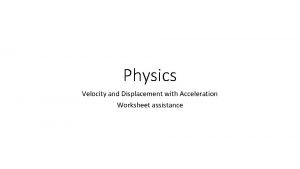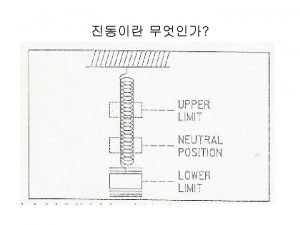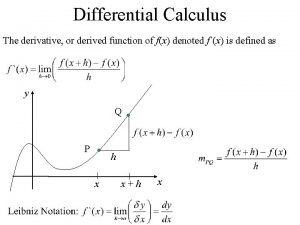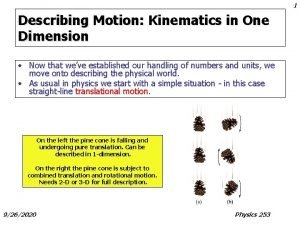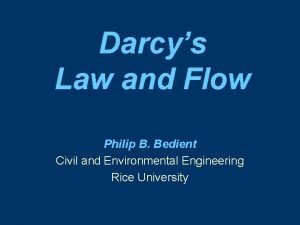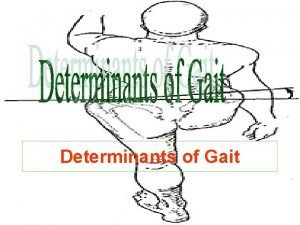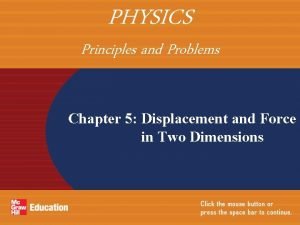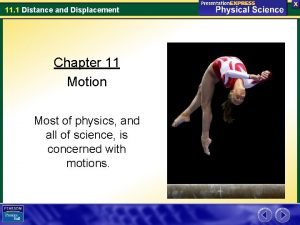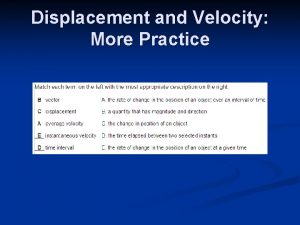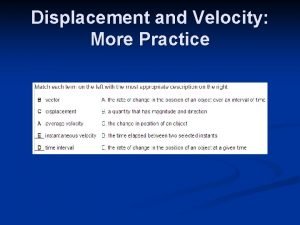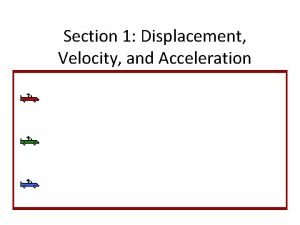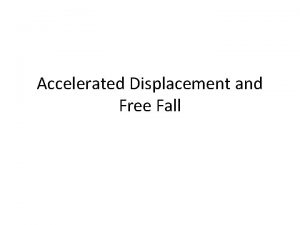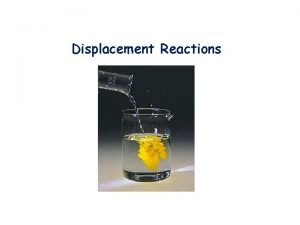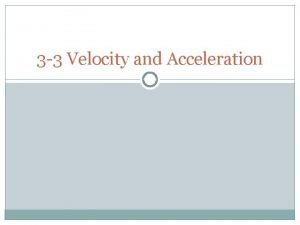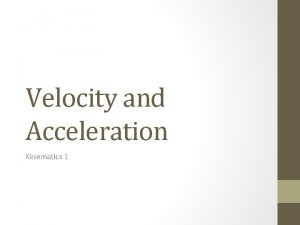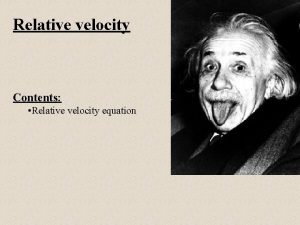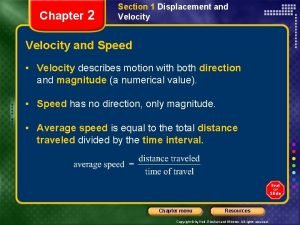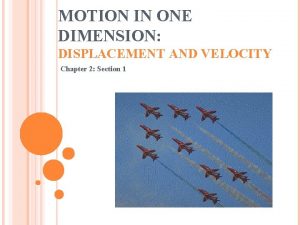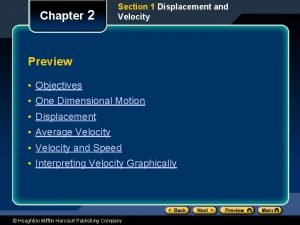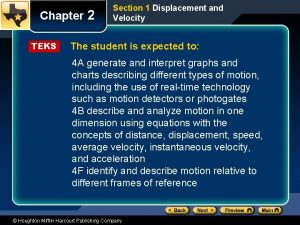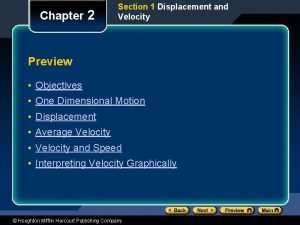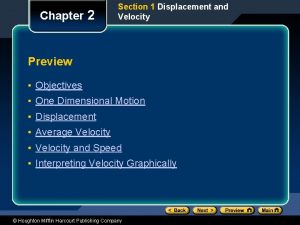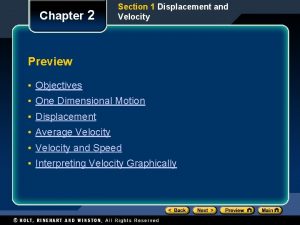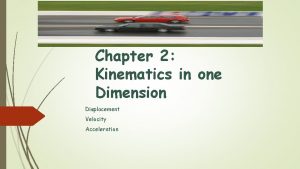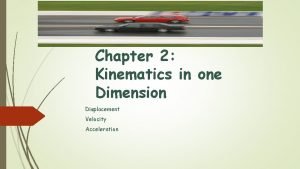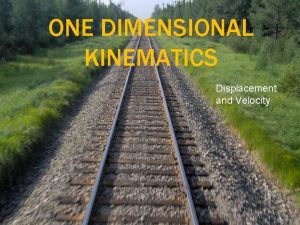Chapter 2 Section 1 Displacement and Velocity One






















- Slides: 22

Chapter 2 Section 1 Displacement and Velocity One Dimensional Motion • Frame of reference - system for specifying the precise location of objects in space and time. Chapter menu Resources Copyright © by Holt, Rinehart and Winston. All rights reserved.

Chapter 2 Section 1 Displacement and Velocity Frame of Reference Chapter menu Resources Copyright © by Holt, Rinehart and Winston. All rights reserved.

Chapter 2 Section 1 Displacement and Velocity Displacement • Displacement - change in position. • Displacement is not always equal to the distance traveled. • The SI unit of displacement is the meter, m. Dx = xf – xi displacement = final position – initial position Chapter menu Resources Copyright © by Holt, Rinehart and Winston. All rights reserved.

Chapter 2 Section 1 Displacement and Velocity Displacement Chapter menu Resources Copyright © by Holt, Rinehart and Winston. All rights reserved.

Chapter 2 Section 1 Displacement and Velocity Positive and Negative Displacements Chapter menu Resources Copyright © by Holt, Rinehart and Winston. All rights reserved.

Chapter 2 Section 1 Displacement and Velocity Average Velocity • Average velocity - total displacement divided by the time interval during which the displacement occurred. • In SI, the unit of velocity is meters per second, abbreviated as m/s. Chapter menu Resources Copyright © by Holt, Rinehart and Winston. All rights reserved.

Chapter 2 Section 1 Displacement and Velocity and Speed • Velocity - describes motion with both a direction and a numerical value (a magnitude). • Speed has no direction, only magnitude. • Average speed is equal to the total distance traveled divided by the time interval. Chapter menu Resources Copyright © by Holt, Rinehart and Winston. All rights reserved.

Chapter 2 Section 1 Displacement and Velocity Interpreting Velocity Graphically • For any position-time graph, we can determine the average velocity by drawing a straight line between any two points on the graph. • If the velocity is constant, the graph of position versus time is a straight line. The slope indicates the velocity. – Object 1: positive slope = positive velocity – Object 2: zero slope= zero velocity – Object 3: negative slope = negative velocity Chapter menu Resources Copyright © by Holt, Rinehart and Winston. All rights reserved.

Chapter 2 Section 1 Displacement and Velocity Interpreting Velocity Graphically Instantaneous velocity - velocity of an object at some instant or at a specific point in the object’s path. The instantaneous velocity at a given time can be determined by measuring the slope of the line that is tangent to that point on the position-versus-time graph. Chapter menu Resources Copyright © by Holt, Rinehart and Winston. All rights reserved.

Chapter 2 Section 2 Acceleration Changes in Velocity • Acceleration - rate at which velocity changes over time. • An object accelerates if its speed, direction, or both change. • Acceleration has direction and magnitude. Thus, acceleration is a vector quantity. Chapter menu Resources Copyright © by Holt, Rinehart and Winston. All rights reserved.

Chapter 2 Section 2 Acceleration Changes in Velocity • Consider a train moving to the right, so that the displacement and the velocity are positive. • The slope of the velocity-time graph is the average acceleration. – When the velocity in the positive direction is increasing, the acceleration is positive, as at A. – When the velocity is constant, there is no acceleration, as at B. – When the velocity in the positive direction is decreasing, the acceleration is negative, as at C. Chapter menu Resources Copyright © by Holt, Rinehart and Winston. All rights reserved.

Chapter 2 Section 2 Acceleration Graphical Representations of Acceleration Chapter menu Resources Copyright © by Holt, Rinehart and Winston. All rights reserved.

Chapter 2 Section 2 Acceleration Velocity and Acceleration Chapter menu Resources Copyright © by Holt, Rinehart and Winston. All rights reserved.

Chapter 2 Section 2 Acceleration Equations for Constantly Accelerated Straight-Line Motion Chapter menu Resources Copyright © by Holt, Rinehart and Winston. All rights reserved.

Chapter 2 Section 2 Acceleration Sample Problem Final Velocity After Any Displacement A person pushing a stroller starts from rest, uniformly accelerating at a rate of 0. 500 m/s 2. What is the velocity of the stroller after it has traveled 4. 75 m? Chapter menu Resources Copyright © by Holt, Rinehart and Winston. All rights reserved.

Chapter 2 Section 3 Falling Objects Free Fall Chapter menu Resources Copyright © by Holt, Rinehart and Winston. All rights reserved.

Chapter 2 Section 3 Falling Objects Free Fall • Free fall - motion of a body when only the force due to gravity is acting on the body. • The acceleration on an object in free fall is called the acceleration due to gravity, or free-fall acceleration. • Free-fall acceleration is denoted with the symbols ag (generally) or g (on Earth’s surface). Chapter menu Resources Copyright © by Holt, Rinehart and Winston. All rights reserved.

Chapter 2 Section 3 Falling Objects Free-Fall Acceleration Chapter menu Resources Copyright © by Holt, Rinehart and Winston. All rights reserved.

Chapter 2 Section 3 Falling Objects Free-Fall Acceleration • Free-fall acceleration is the same for all objects, regardless of mass. • This book will use the value g = 9. 81 m/s 2. • Consider a ball thrown up into the air. – Moving upward: velocity is decreasing, acceleration is – 9. 81 m/s 2 – Top of path: velocity is zero, acceleration is – 9. 81 m/s 2 – Moving downward: velocity is increasing, acceleration is – 9. 81 m/s 2 Chapter menu Resources Copyright © by Holt, Rinehart and Winston. All rights reserved.

Chapter 2 Section 3 Falling Objects Velocity and Acceleration of an Object in Free Fall Chapter menu Resources Copyright © by Holt, Rinehart and Winston. All rights reserved.

Chapter 2 Section 3 Falling Objects Sample Problem Falling Object Jason hits a volleyball so that it moves with an initial velocity of 6. 0 m/s straight upward. If the volleyball starts from 2. 0 m above the floor, how long will it be in the air before it strikes the floor? Chapter menu Resources Copyright © by Holt, Rinehart and Winston. All rights reserved.

Chapter 2 Section 3 Falling Objects Sample Problem 1. Define Given: vi = +6. 0 m/s a = –g = – 9. 81 m/s 2 Dy = – 2. 0 m Unknown: Dt = ? Diagram: Place the origin at the Starting point of the ball (yi = 0 at ti = 0). Chapter menu Resources Copyright © by Holt, Rinehart and Winston. All rights reserved.
 Single displacement vs double displacement
Single displacement vs double displacement Displacement and velocity worksheet
Displacement and velocity worksheet Vibration displacement velocity acceleration
Vibration displacement velocity acceleration Displacement to velocity differentiate
Displacement to velocity differentiate How are linear quantities related to angular quantities
How are linear quantities related to angular quantities Initial velocity and final velocity formula
Initial velocity and final velocity formula Speed unit
Speed unit Darcy velocity equation
Darcy velocity equation Is v final velocity
Is v final velocity Instantaneous velocity vs average velocity
Instantaneous velocity vs average velocity Darcy velocity vs actual velocity
Darcy velocity vs actual velocity Tangential speed
Tangential speed Minimum velocity
Minimum velocity Willow cabin speech
Willow cabin speech Section 2 velocity and momentum
Section 2 velocity and momentum The lateral displacement of cog exceeds one inch with:
The lateral displacement of cog exceeds one inch with: Chapter 5 displacement and force in two dimensions
Chapter 5 displacement and force in two dimensions 11.1 distance and displacement
11.1 distance and displacement One god one empire one religion
One god one empire one religion One one one little puppy run
One one one little puppy run One king one law one faith
One king one law one faith One god one empire one emperor
One god one empire one emperor Ford one plan
Ford one plan

